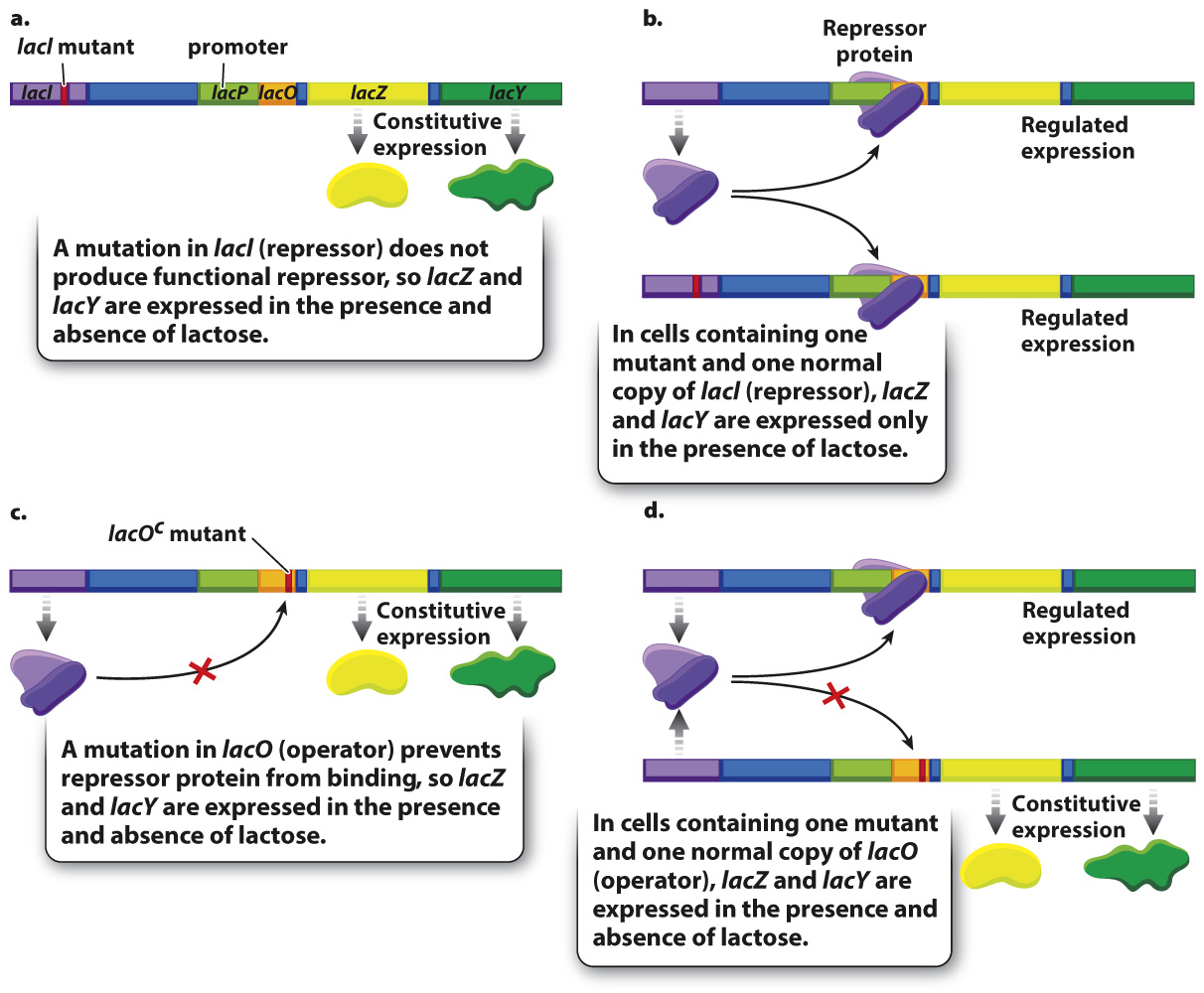The function of the lactose operon was revealed by genetic studies.
Although the interactions shown in Fig. 19.16 and Fig. 19.17 have since been confirmed by direct biochemical studies, the inferences about how the repressor and operator work were originally drawn from studies of mutations (Fig. 19.18). As part of their investigation, Jacob and Monod identified bacterial mutants that always expressed β-galactosidase and permease, even in the absence of lactose. The phenotype of a cell carrying such a mutation is said to be constitutive for production of the proteins. Constitutive expression means that it occurs continuously. The most common constitutive phenotype resulted from a mutation in the lacI gene (lacI– mutants) that produced a defective repressor protein (Fig. 19.18a).

Jacob and Monod also did experiments in which E. coli contained not one but two lactose operons (Fig. 19.18b). In bacterial cells containing one mutant and one nonmutant copy of the lacI repressor gene, expression of the structural genes was no longer constitutive but instead showed normal regulation. This finding is consistent with the idea that the nonmutant form of the gene produces a diffusible protein, which implies that the normal repressor is able to bind to and repress transcription from both operons, not just the one that it is physically linked to.
A much less common class of constitutive mutants identified the operator (Fig. 19.18c). Genetic studies of the mutations in these cells showed that they were not located in the lacI gene that encodes the repressor but, instead, closer to the coding sequence of lacZ. The genetic element in which the mutations occurred was called the lactose operator (lacO), and the constitutive mutations were designated lacOc (“c” for “constitutive”). When two different lactose operons, one normal and one with lacOc, were in the same cell, the operon carrying lacOc was transcribed constitutively, even in the presence of normal repressor, because the repressor was unable to bind to the mutant operator site in lacOc (Fig. 19.18d). Jacob and Monod wrote that “to explain this effect, it seems necessary to invoke a new type of genetic entity, called an ‘operator,’ which would be: (a) adjacent to the group of [structural] genes and would control their [transcriptional] activity; and (b) would be sensitive to the repressor produced by a particular regulatory gene.”
Quick Check 4 Predict the consequence of a mutation in the lacI repressor gene that produces repressor protein that is able to bind to the operator, but not able to bind allolactose.
Quick Check 4 Answer
A mutation in the repressor gene that does not allow the repressor protein to bind allactose means that the repressor will never be blocked from binding the lactose operon promoter. This will lead to a cell that is not able to produce β-galactosidase in the presence or absence of lactose. In other words, the lactose operon will not be inducible.